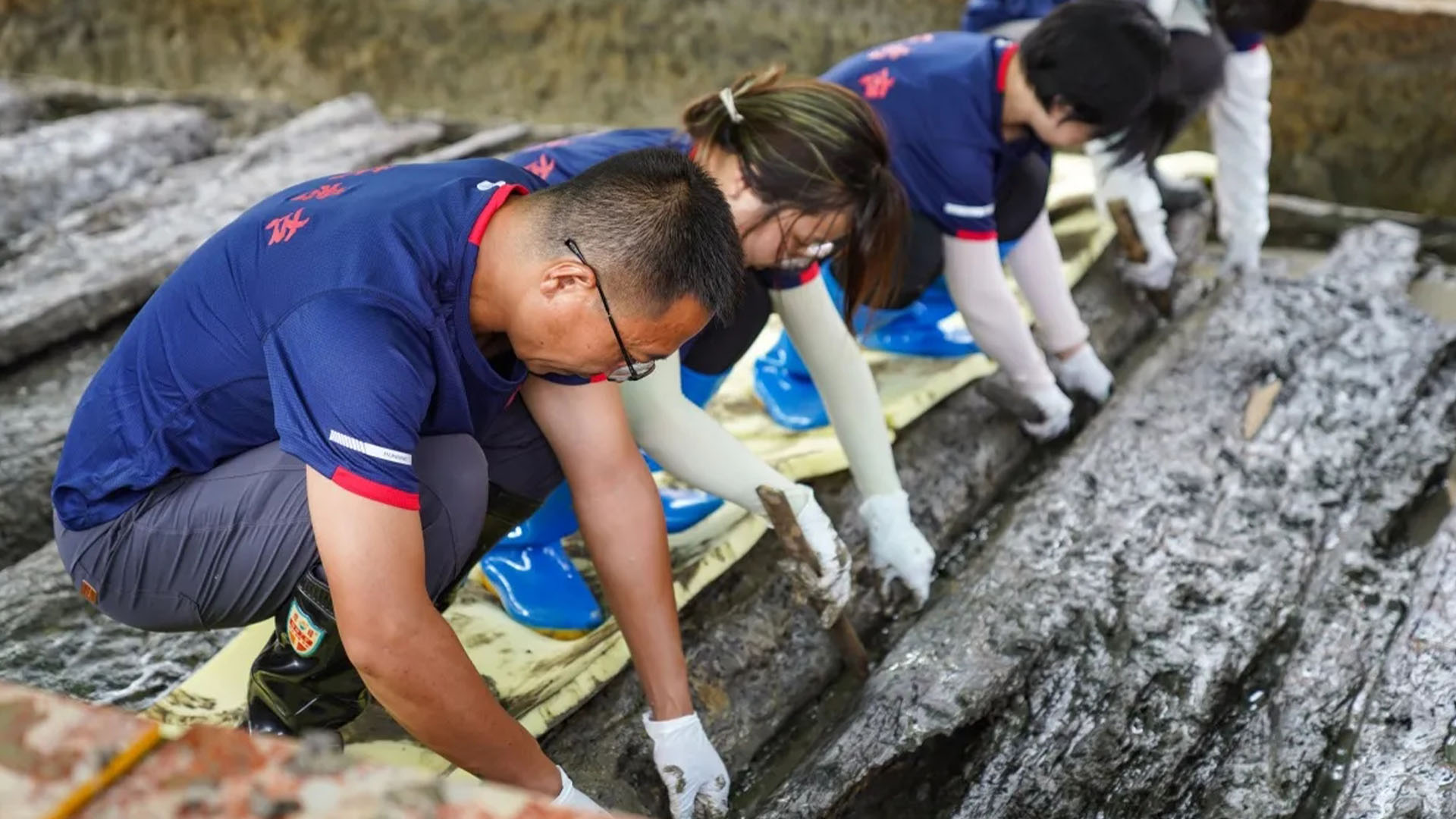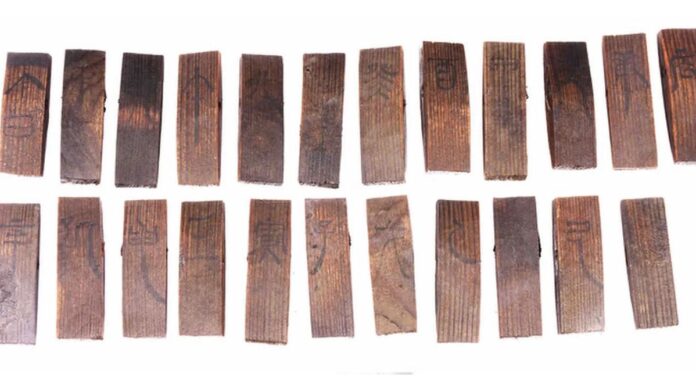[ad_1]
Archaeologists in China have unearthed a mysterious set of rectangular wooden pieces linked to an ancient astronomical calendar. The artifacts were discovered inside an exceptionally well-preserved 2,000-year-old tomb in the southwest of the country.
Each of the 23 wooden slips is about an inch (2.5 centimeters) wide and 4 inches (10 cm) long and displays a Chinese character related to the Tiangan Dizhi, or “Ten Heavenly Stems and 12 Earthly Branches” — a traditional Chinese astronomical calendar established during the Shang dynasty, which ruled from about 1600 B.C. to about 1045 B.C.
Archaeologists think one of the slips may have represented whatever was the current year and that the other 22 slips could have been used to specify any particular year in the ancient calendar, according to a translation of a story on the China News website, an agency run by the Chinese government.

Circular perforations at the edges of each slip suggest they were once tied together.
However, it’s not yet clear how the set of calendrical wooden slips would have functioned, an expert told Live Science.
This is the first time such objects have been found in an ancient tomb, although the practice of writing characters on strips of wood or bamboo was common in China before the invention of paper.
Golden age

The wooden slips and many other artifacts were discovered earlier this year in a tomb in the Wulong district, about 870 miles (1,400 kilometers) southwest of Beijing, archaeologists from the Chongqing municipal government told the Global Times — which is also run by the Chinese government.
The tomb contains a written list of all the burial items, which also states that it was built in 193 B.C. That places the tomb during the time of the Western Han dynasty, which ruled much of China from 206 B.C. to A.D. 9; it was followed by the Eastern Han dynasty, which ruled until A.D. 220, and together they are considered a “golden age” when many Chinese traditions were established.
Archaeologist Wang Meng said the tomb was the best-preserved wooden-chamber tomb ever found in China’s southwest.
Project leader Huang Wei told the Global Times that the tomb also contained more than 600 cultural artifacts, including lacquerware bowls, boxes, jars and plates. It also held bamboo utensils and musical pipes, spears and cooking tripods made from copper, wooden figurines, as well as pottery and bronze objects.
Calendar mystery
Astronomer Ed Krupp, the director of the Griffith Observatory in Los Angeles and author of “Echoes of the Ancient Skies: The Astronomy of Lost Civilizations” (Dover, 2003), who was not involved in the Wulong discovery, told Live Science that while the Tiangan Dizhi calendar is mainstream — it is used in Chinese astrology, for example — the wooden slips found in the Wulong tomb were unusual.
“The wooden slips with calendric notations are significant as the first and only known example of that kind of inscription on that kind of object,” he said in an email.
But it doesn’t appear that the set of wooden slips could have functioned as a calendar; instead, it seems they could have been used to reference any year of the 60-year calendrical cycle, he said.
“If so, they are not ‘books,’ but objects used to highlight a particular year,” he said. He noted the similarity to a practice followed at a Taoist temple in the Chinese city of Suzhou, where each year in the cycle is represented by a statue that is specially marked when it becomes current.
Krupp said that the finds from the Wulong tomb showed that a person of high status had been buried there. “The artifacts interred with the deceased are numerous and very, very fine,” he said. “This is rich, expensive material.”
[ad_2]
Source link



